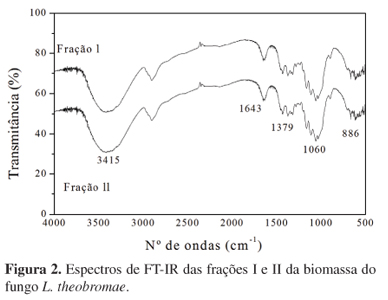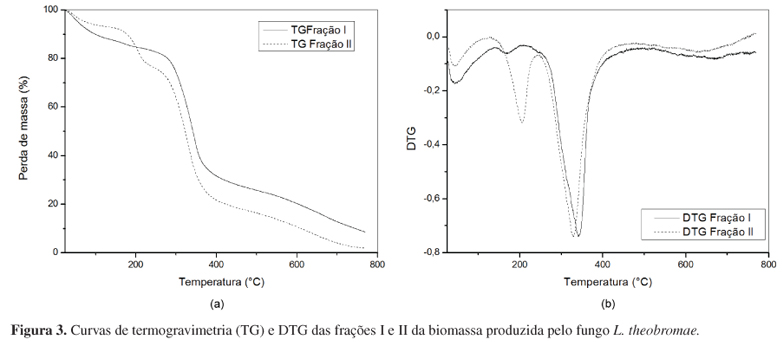Gums produced by microorganisms are used as food improvement agents and the residual biomass is used for the isolation of their constituents. The objective of this work was to produce and characterize fractions of extracellular biomass in submerged fermentation with Lasidioplodia theobromae isolated from cocoa of Bahia with descending death. We tested four carbon sources fermented at 28 ºC, 180 rpm for 72 h. The one resulting in greater production of biomass was evaluated with regard to changes in concentration and pH. The fractions obtained were characterized by infrared spectroscopy (FTIR) and thermogravimetric analysis (TGA), percentage composition and monosaccharide. The submerged fermentation by L. theobromae with commercial sucrose at 40 g.L-1 and pH 4.0 led to a maximum production of fraction I (8.64 g.L-1), while the fermentation at 50 g.L-1 and pH 5.0 yielded maximum production of fraction II (23.69 g.L-1). The FTIR spectra indicated the presence of amino groups, polyols and esters. Three weight loss events with different intensities were observed in the thermogravimetric analysis. The fractions have the same composition, but with different proportions, being sources of protein (19.88-29.45%), lipids (11.07-28.79%), ash (3.55-3.88%), and carbohydrates (30.16-37.96%) made only of glucose and mannose, i.e. they are both glucomannans. The fractions have desirable properties for wide use in biotechnological processes of high scientific relevance.
Gum; Lasidioplodia theobromae; residual biomass







